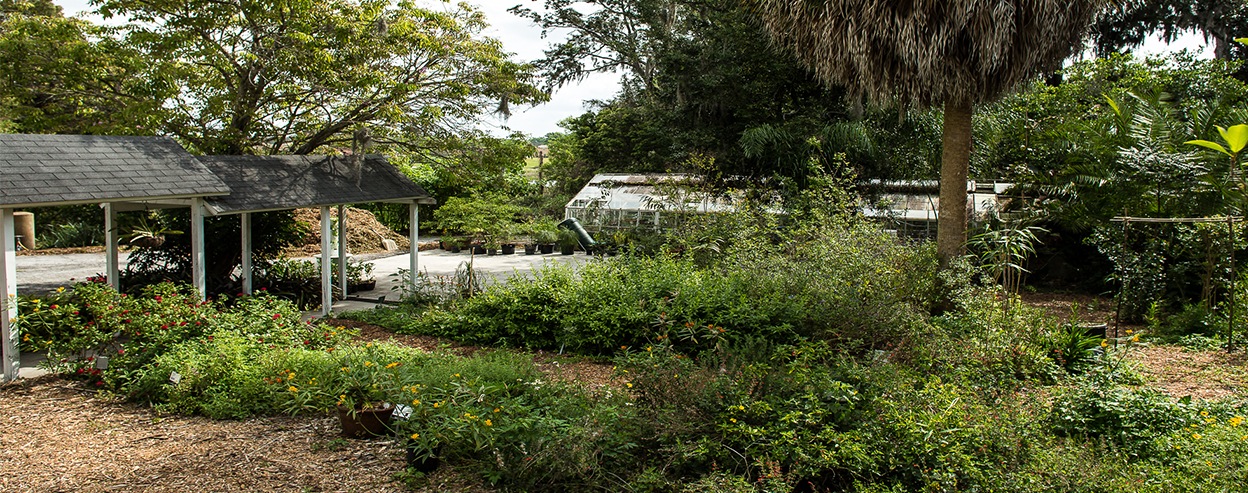Nehrling Gardens
1885
Nehrling purchased 40 acres of undeveloped land in the German colony of Gotha. In the following years contiguous parcels were acquired to obtain the best land and soil conditions for his tropical garden.
1886–1901
Nehrling visited the property each year to develop “Palm Cottage Gardens.”
1902
The 1880’s two-story wood frame vernacular house was purchased and relocated to its current location on the property—the home cut into sections and rolled on logs by cart from “downtown” Gotha.
1917
A freeze killed many valuable plants at Gotha, causing Nehrling to seek out property further south in Naples, where he created a second garden: “Tropical Gardens and Arboretum.” This property eventually became part of what is now known as the Naples Zoo and Caribbean Gardens.
1929
With failing health, Nehrling returned to Gotha in the fall, dying on November 22nd. He was buried in Gotha’s Woodlawn Memorial Park cemetery. After his death the property lay idle; it changed ownership several times, and was robbed of many valuable and rare plants.
1933
The property was next purchased by Julian Nally, a writer and Princeton graduate. He was the son of the president of RCA (a significant company at that time as trans-Atlantic communications became essential to America.) Nally became well known for the propagation and commercialization of bromeliads and the Gloriosa lily, along with his wife, Maggie, who also was an avid orchid grower. They built four greenhouses on the property, which was called the “Nally Bromeliad and Bamboo Plantation.”
1977
Julian and Maggie Nally died within a month of each other. A friend and collaborator, Michael Spencer, took over the management of the property as executor of the
estate.
1979
The property was purchased and subdivided by a group of developers and named Lake Nally Woods subdivision. The home and 6 acres were preserved between two sections of the new development. This remaining site extends from Hempel Avenue into Lake Nally, which formerly was called Lake Audubon by Nehrling.
1981
The Nehrling home and remaining six acres were purchased by Barbara and Howard Bochiardy who restored the home and gardens, also adding an architecturally compatible garage and workshop. The one remaining Nally-era greenhouse was relocated from the adjacent property to its current site. After her husband’s death in 1990, it became progressively difficult for Barbara to maintain the home and garden.
1999
The Henry Nehrling Society was formed with the mission to save, restore, and operate “Palm Cottage Garden,” and the project was renamed “Nehrling Gardens.”
2000
Henry Nehrling’s Palm Cottage Gardens was placed on The National Register of Historic Places; the Henry Nehrling Society was incorporated as a 501(c)(3) not-for-profit corporation.
2001–2009
The Henry Nehrling Society pursued a variety of strategies to obtain state and local funding to purchase the property, but was stymied by bureaucratic difficulties and budget cuts. In 2003 the Society defined its mission to focus on: Historic Preservation, Horticultural Education, and Environmental Conservation.
2009
On November 30th The Henry Nehrling Society purchased the property with the aid of donations, foundation grants, fundraising events, and a private loan.
2010
In April The Henry Nehrling Society took possession of “Palm Cottage Gardens.”
2011
The Society formally applied to do business as “Nehrling Gardens.”
2013
On May 9th the official Florida Heritage Landmark marker was dedicated. The
marker was sponsored by the Henry Nehrling Society, Bloom & Grow Garden Society, the Rotary Club of Windermere, Windermere Garden Club, and the Florida Department of State.
Researched and Revised July 27, 2014 by Gotha and Nehrling Gardens Historian: Kathleen Klare

